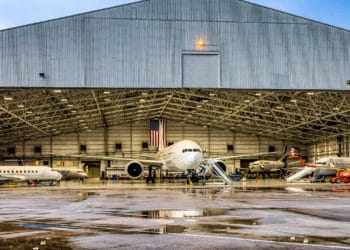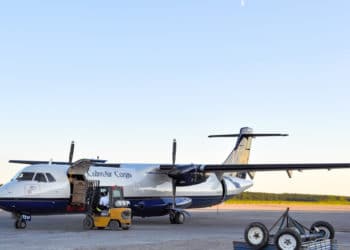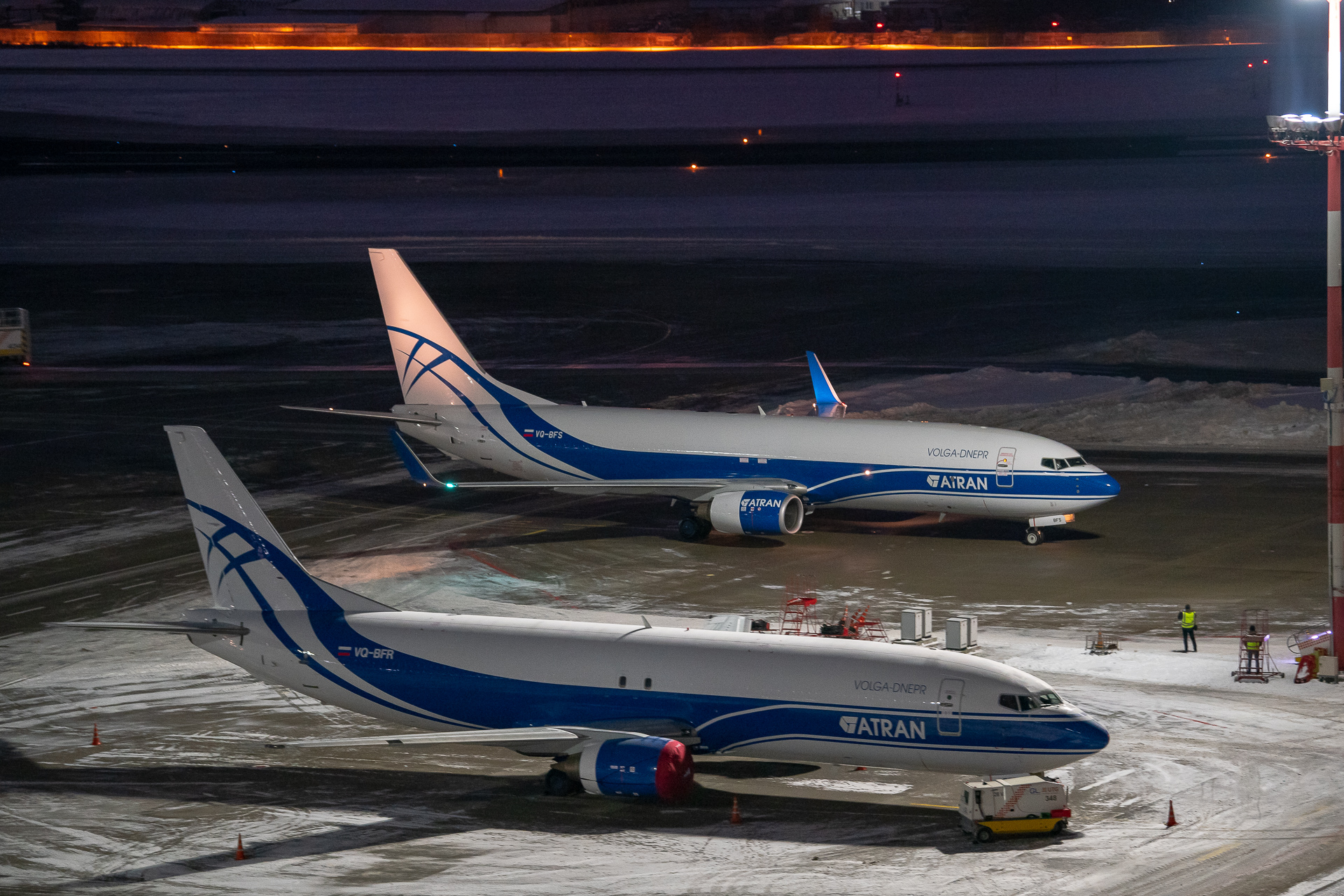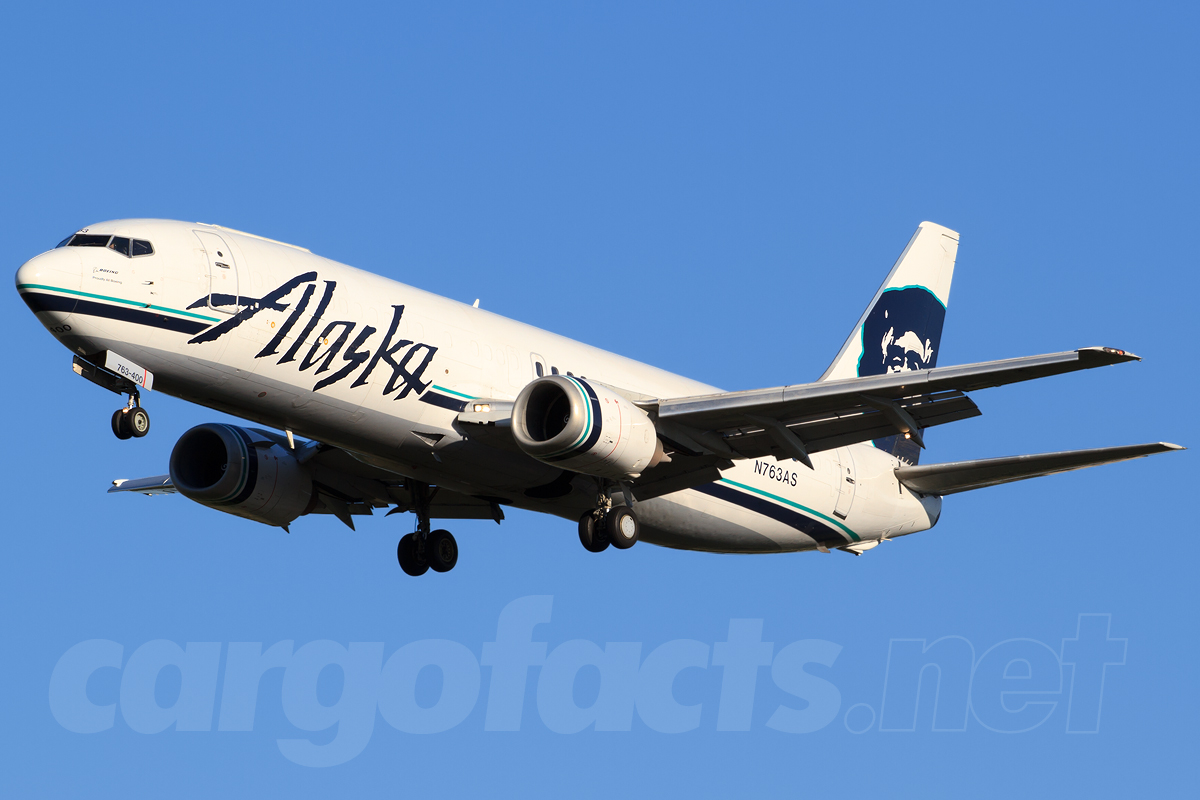No products in the cart.
Big Fish
Before the Dreamlifter (or Large Cargo Freighter, if you want to be technical) or the Beluga, there was the Super Guppy. And before there was the Super Guppy, there was the Pregnant Guppy.
This Super Guppy, the last built, was purchased by NASA in 1997 from Airbus Skylink and refurbished to do odd jobs for the agency. It is seen here arriving at Boeing field delivering pieces of the Space Shuttle training module the Museum of Flight.
First developed in 1960, the Guppies were invented out of necessity: NASA and the government needed to transport outsize items quickly; and opportunity – big airlines like Pan Am were dumping the Boeing Stratocruiser in favor of the 707 and DC-8. Thus was born a very odd looking air freight pioneer.
In 1960, as NASA’s need to transport rocket boosters from California to the east coast grew, aircraft broker Leo Mansdorf had stockpiled a group of former Pan-Am and BOAC Boeing 377 Stratocruisers in southern California. The Stratocruiser was seen as expensive and unreliable even when new, and now held little interest outside of potential freighter conversion, but few needed such a large prop when cheaper and more reliable alternatives like the DC-4, DC-6, and Constellation were plentiful. The big props were nearly worthless at a time when Jets were coming online.
From two of these Stratocruisers, former USAF captain Jack M. Conroy designed and built and outsized freighter with a towering fuselage growing out of the bottom half of a Stratocruiser. In an epic two-year quest to build the plane, Conroy mortgaged virtually everything he owned, and finally got the plane built. Conroy, with fellow aviation pioneer Clay Lacy in the right seat, finally flew the huge aircraft on Sept. 19, 1962.
Though the base of the cargo floor is only thirteen feet wide, necessitated by the structure of the fuselage, the fuselage balloons out to 25 feet in diameter at its widest point, while the length of the fuselage was stretched considerably to give a cargo compartment 111 feet long. The entire forward section of the plane opens up like a giant door to access the cargo compartment, and a ground power unit is required to open the door.
After demonstrations for NASA and Wehrner von Braun, development began on an improved version – the Super Guppy. A slightly smaller version, the Mini Guppy, was also built in the early sixties.
The Super Guppies – five were built – were custom made. Rather than being heavily modified Stratocruisers like the Pregnant Guppy and the Mini Guppy, the fuselages of the super guppies were built from scratch and then components from the Stratocruisers – wings, cabin, flight controls, were added. The final four differed in that they were Super Guppy Turbines – replacing the piston engines with Allison 501 turboprops.
Aero Spacelines was the airline that operated and manufactured the Guppies, and they were all based at Van Nuys. By the end of the 1960s, Aero Spacelines had gotten into financial difficulty and Conroy had formed a new company to build a Canadair CL-44 based guppy-style plane.
After the space program cooled and other forms of transport became available (chiefly the Lockheed C-5), the Guppies went on to a second life with Airbus, transporting A300 and later A310 and A320 components around Europe and developing the system that both Boeing and Airbus now use for working with subcontrators in remote locations.
There too, however, the Guppies were eventually replaced by the A300-600ST Beluga.
On its first pass over Boeing field and a brief tour of Seattle and Everett, the Guppy was accompanied by a learjet doing air-to-air video for NASA. The learjet pilot? Clay Lacy himself.
If you want to see a Guppy for yourself, they remain on display at Toulouse-Blangac, the Airbus factory at Finkenwerder, Germany, Tillamook Air Museum in Oregon (Mini Guppy), and the Pima Air and Space museum at Davis-Monthan Air Force Base in Arizona.
©Photographer: Alex Kwanten






